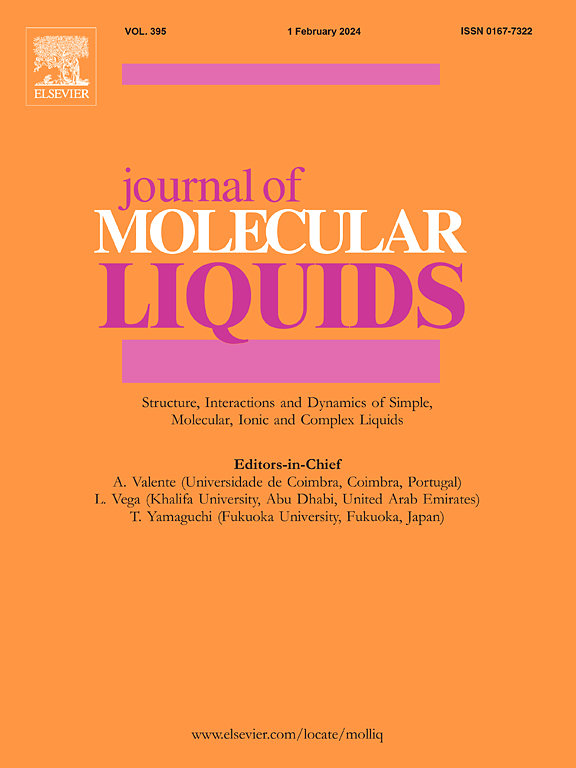Lignin nanoparticles as sustainable stabilizers for pickering emulsions
IF 5.3
2区 化学
Q2 CHEMISTRY, PHYSICAL
引用次数: 0
Abstract
Lignin is an abundant aromatic biopolymer known for its low toxicity, biodegradability, and renewable sourcing. In this manuscript, lignin was processed into nanoparticles to exploit its emulsifying potential. The antisolvent precipitation method was used to synthesize lignin nanoparticles (LigNPs), which were characterized for their size, morphology, stability, and cytotoxicity. The chemical structure of lignin was confirmed through HSQC-NMR, revealing no significant changes after fractionation. LigNPs exhibited colloidal stability over 90 days, maintaining stable apparent hydrodynamic diameters and negative zeta potentials, indicating stability due to electrostatic repulsion. Macroscopic and microscopic analyses confirmed their effectiveness in stabilizing emulsions, with densely packed interfaces at higher nanoparticles concentrations (0.100 % w v−1). The addition of salt destabilized the emulsions, highlighting the role of electrostatic interactions in stabilization. Confocal microscopy revealed complete particle coverage at the oil droplet interface, forming a stable barrier against coalescence. The emulsions exhibited promising long-term stability, minimal creaming, and good biocompatibility. These findings underscore the potential of LigNPs as cost-effective, eco-friendly alternatives in various industries, including pharmaceuticals, cosmetics, and food, supporting lignin valorization within a circular economy framework.
求助全文
约1分钟内获得全文
求助全文
来源期刊

Journal of Molecular Liquids
化学-物理:原子、分子和化学物理
CiteScore
10.30
自引率
16.70%
发文量
2597
审稿时长
78 days
期刊介绍:
The journal includes papers in the following areas:
– Simple organic liquids and mixtures
– Ionic liquids
– Surfactant solutions (including micelles and vesicles) and liquid interfaces
– Colloidal solutions and nanoparticles
– Thermotropic and lyotropic liquid crystals
– Ferrofluids
– Water, aqueous solutions and other hydrogen-bonded liquids
– Lubricants, polymer solutions and melts
– Molten metals and salts
– Phase transitions and critical phenomena in liquids and confined fluids
– Self assembly in complex liquids.– Biomolecules in solution
The emphasis is on the molecular (or microscopic) understanding of particular liquids or liquid systems, especially concerning structure, dynamics and intermolecular forces. The experimental techniques used may include:
– Conventional spectroscopy (mid-IR and far-IR, Raman, NMR, etc.)
– Non-linear optics and time resolved spectroscopy (psec, fsec, asec, ISRS, etc.)
– Light scattering (Rayleigh, Brillouin, PCS, etc.)
– Dielectric relaxation
– X-ray and neutron scattering and diffraction.
Experimental studies, computer simulations (MD or MC) and analytical theory will be considered for publication; papers just reporting experimental results that do not contribute to the understanding of the fundamentals of molecular and ionic liquids will not be accepted. Only papers of a non-routine nature and advancing the field will be considered for publication.
 求助内容:
求助内容: 应助结果提醒方式:
应助结果提醒方式:


